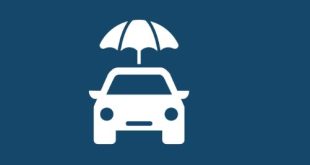Looking to adjust car insurance rates: Learn how to customize your coverage for the best deals and savings.
adjust car insurance. In the dynamic world of car insurance, finding the perfect balance between coverage and cost can sometimes feel like a daunting task. Fortunately, the realm of adjustable car insurance rates offers a plethora of options to tailor your policy to your specific needs while optimizing savings. In this comprehensive guide, we’ll delve into five smart strategies to help you adjust car insurance, ensuring maximum coverage at the best possible rates.
Adjust Car Insurance
Adjusting car insurance isn’t just about cutting costs—it’s about optimizing your coverage to suit your unique circumstances. Whether you’re looking to lower your premiums, enhance your protection, or simply streamline your policy, understanding the ins and outs of adjustment is key to achieving your insurance goals.
Car Insurance Driving: 10 Tips for Safe Car Insurance Driving
1. Evaluate Your Coverage Needs
Before making any adjustments, it’s essential to assess your coverage needs thoroughly. Consider factors such as your vehicle’s value, your driving habits, and your financial situation. Are you adequately protected in the event of an accident? Are there any additional coverages you may require, such as roadside assistance or rental car reimbursement? By conducting a comprehensive evaluation, you can identify areas where adjustments may be necessary to better align with your needs and budget.
2. Optimize Deductibles
Adjusting your deductibles can significantly impact your premiums. Typically, opting for a higher deductible results in lower monthly payments, while a lower deductible may lead to higher premiums. Evaluate your financial capabilities and risk tolerance to determine the deductible that best suits your situation. Keep in mind that choosing a higher deductible means you’ll be responsible for more out-of-pocket expenses in the event of a claim, so it’s essential to strike a balance that provides adequate coverage without breaking the bank.
3. Explore Discounts and Bundling Options
Many insurance companies offer various discounts and bundling options that can help reduce your premiums. These may include discounts for safe driving, bundling your auto and home insurance policies, installing anti-theft devices, or completing defensive driving courses. Take the time to inquire about available discounts and explore bundling options to maximize your savings without sacrificing coverage.
4. Consider Usage-Based Insurance
Usage-based insurance (UBI) programs use telematics technology to track your driving habits and adjust your premiums accordingly. By monitoring factors such as mileage, speed, and driving behaviors, insurers can offer personalized rates based on your actual driving performance. If you’re a safe and responsible driver, UBI programs can lead to significant savings on your car insurance premiums.
5. Review and Update Regularly
Adjusting your car insurance shouldn’t be a one-time event—it’s an ongoing process that requires regular review and updates. As your circumstances change, such as buying a new car, moving to a different location, or experiencing life events like marriage or parenthood, your insurance needs may evolve. Be proactive in reviewing your policy periodically to ensure it continues to meet your needs and provides the best possible coverage at the most competitive rates.
FAQs:
Q: Can I adjust my car insurance coverage mid-policy? A: Yes, most insurance companies allow policyholders to make adjustments to their coverage mid-policy term. However, it’s essential to review your policy terms and any potential fees or penalties associated with changes.
Q: Will adjusting my car insurance affect my coverage? A: Adjusting your car insurance may impact your coverage depending on the changes you make. For example, increasing your deductibles may lower your premiums but could also mean higher out-of-pocket expenses in the event of a claim.
Q: How often should I review my car insurance policy? A: It’s recommended to review your car insurance policy annually or whenever significant life changes occur, such as buying a new car, moving to a new location, or experiencing changes in your driving habits.
Q: Are there any discounts available for adjusting my car insurance? A: Many insurance companies offer discounts for various factors, including safe driving habits, bundling policies, installing anti-theft devices, and completing defensive driving courses. Be sure to inquire about available discounts with your insurance provider.
Q: Can I adjust my car insurance online? A: Yes, most insurance companies offer online portals or mobile apps that allow policyholders to make adjustments to their coverage, such as updating personal information, adding or removing vehicles, or adjusting coverage limits.
Q: What should I consider before adjusting my car insurance? A: Before making any adjustments to your car insurance, consider factors such as your coverage needs, budget, deductible preferences, and eligibility for discounts or bundling options.
Conclusion:
Adjusting car insurance is a strategic process that requires careful consideration of various factors, including coverage needs, budget constraints, and eligibility for discounts. By evaluating your options and implementing smart strategies such as optimizing deductibles, exploring discounts, and regularly reviewing your policy, you can customize your coverage for maximum savings without sacrificing protection. Remember, the key to successful adjustment lies in finding the perfect balance between coverage and cost, ensuring peace of mind on the road ahead.



